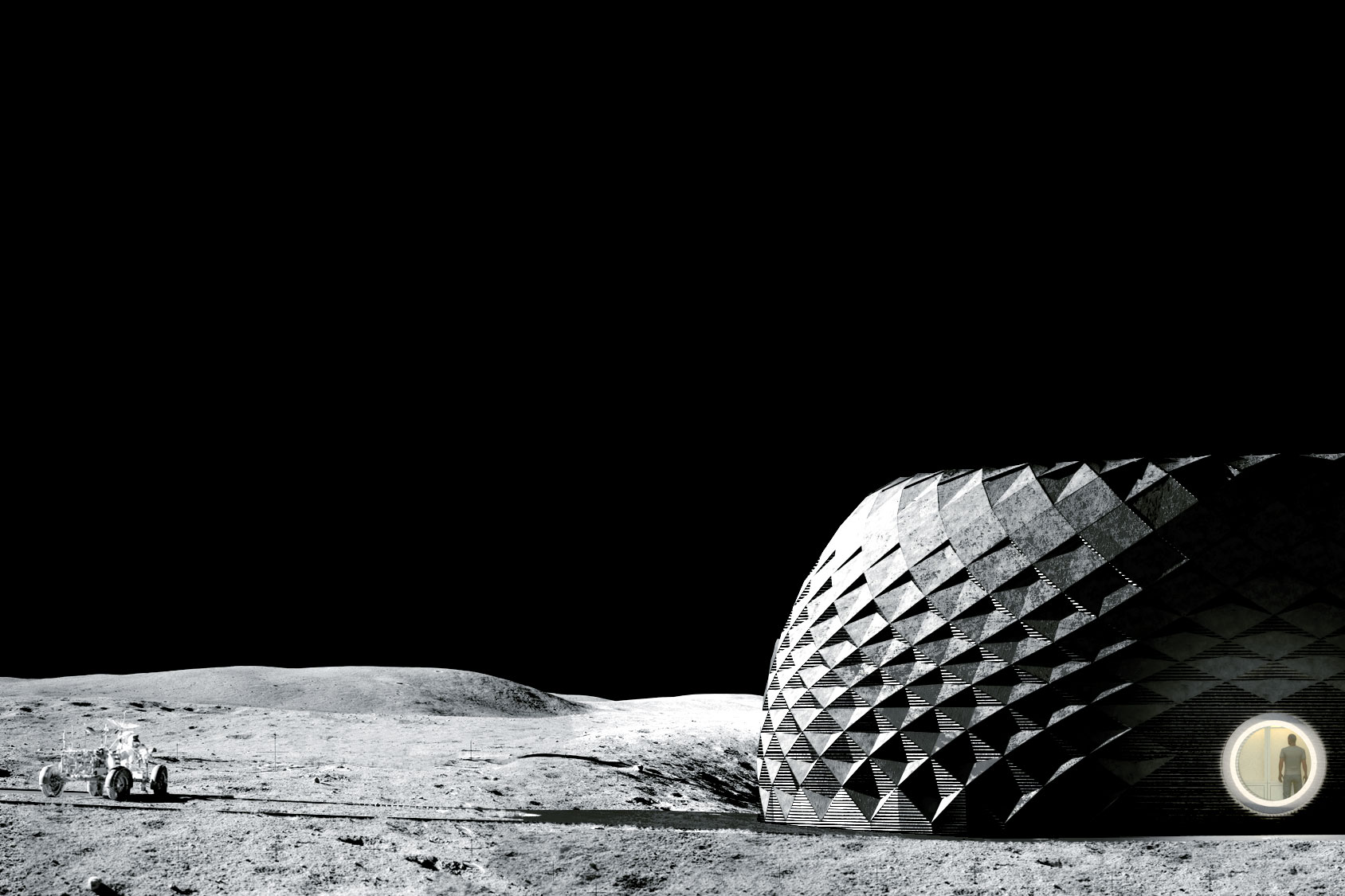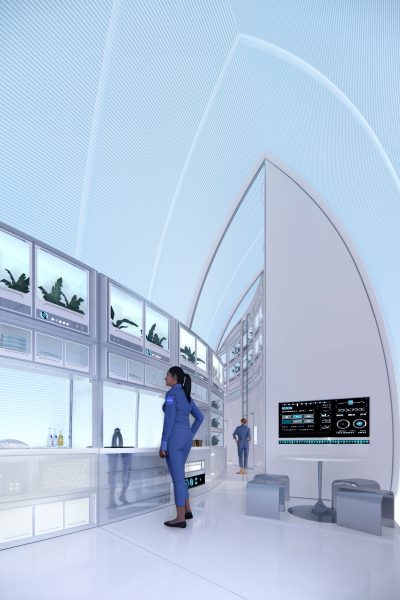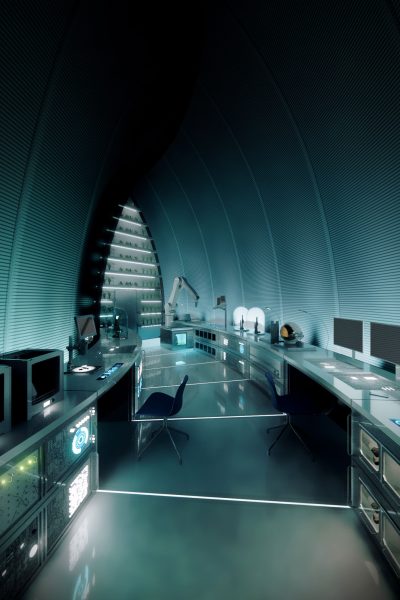Story at a glance:
- Bjarke Ingels Group (BIG) founder shares how the difficult problems of building on the Moon lead to new technologies for building better on Earth.
- Design for the Moon requires an incredible attention to efficiency and to using local materials—in this case moondust.
Mars Dune Alpha, Project Olympus, Mars Science City—Bjarke Ingels Group (BIG) has worked on some pretty out-of-this-world projects. Among their many projects, one is a partnership with 3D printing company ICON and NASA on Project Olympus to explore how to construct buildings on the Moon.
“I can’t say we have a lot of construction sites beyond Earth, but no doubt, that is for sure on the horizon,” Bjarke Ingels says when we meet at his studio in Brooklyn’s vibrant Dumbo neighborhood in September 2025. Dressed in all black with his leg thrown over the chair, he’s casual yet matter-of-fact about the future. He cracks open a Diet Coke as he talks about what it takes to travel back and forth to the Moon, or even Mars, and how such travel demands efficiency. “We’re looking at essentially melting moondust into rock as a construction material because you want to take as little as possible with you,” he says of the partnership with ICON and NASA that looks at using solar-powered, military-grade lasers to melt lunar regolith.
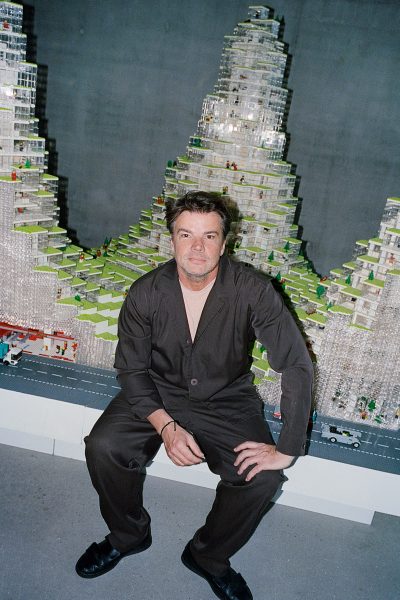
Bjarke Ingels. Photo by Petra Kleis, courtesy of BIG
It’s an extraordinary case for using what you have, as taking materials to the Moon is expensive, Ingels says. “If you take a pound of cement, you add four zeros to the price tag once it arrives on the moon. Rather than bring the materials, actually work with what’s there. Specifically on the Moon there’s moondust, so work with that.”
Ingels says 2028 is the scheduled landing for the first prototype laser sensor on the Moon (not specific to BIG or ICON), with the goal to print what he likens to a sidewalk tile out of melted moondust and test its strength and resiliency. “In an ideal world that turns out to be a great, strong, sturdy material, then that should potentially free up the funding for the first human habitat.”
While the prospects excite him, he says it’s unlikely we’ll be living anywhere other than Earth anytime soon. “There’s this idea that we destroyed Earth so now we go to Mars; it’s going to be very difficult to bring Mars to a condition where it’s going to be even a fraction of a fraction of a fraction as nice and hospitable as Earth.”
Instead, he imagines the first successful structures on the Moon will be more like McMurdo Station, the research hub on Antarctica. “People can go and will go for science, for research, probably also a little bit for tourism eventually.”
The Effect on Earth
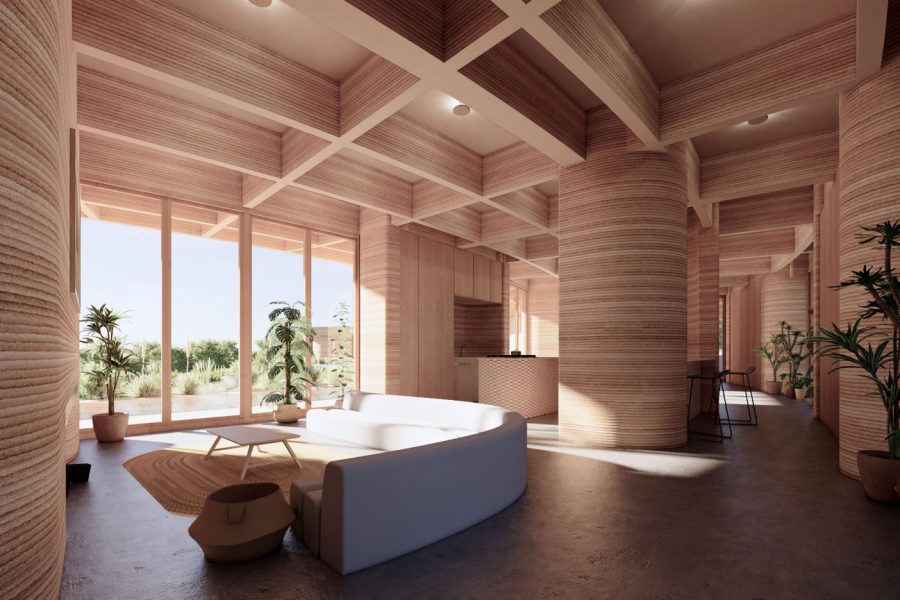
Design for outer space informs work at home, as experts come up with new efficient solutions. CODEX, seen here, is a digital catalog of ready-to-print homes by ICON. As part of this BIG designed these incredibly weather-resistant homes. Rendering by BIG
Designing for projects like these can inform a lot of architecture and design on Earth. “All of the things we need to do for the energy transition on Earth, we have to do on the Moon and Mars. The electrification of transportation and of buildings is a must on the moon and Mars. All the things we have to do on Earth for reasons of sustainability, I must do on the Moon and Mars.”
Technology that drives GPS, the smartphone, data compression, these are all largely side effects of NASA and DARPA, Ingels says. “When you have to solve very difficult problems, necessity is the mother of invention. A lot of those inventions came from the space race or military arms race and trickled down into an everyday economy and brought a lot of developments. There you definitely see synergies between off-world exploration and sustainability.”
When you have to solve very difficult problems, necessity is the mother of invention.
Already ICON’s Phoenix printer is an example. The new multi-story robotic construction system introduces the capability of printing an entire building enclosure, including foundations and roof structures, up to two stories, according to ICON. The invention is a direct result of Project Olympus, Ingels says.
“The existing technology of ICON was a kind of gantry crane where you have to lay out rails, mount the crane, and it has an arm that goes back and forth. That meant you had to flatten the site to lay out the rails. There was a lot of manual labor that had to go in before you could start deploying the printer, and we thought that’s not really going to work on the Moon.”
They needed a single point pivot; Phoenix was just that, eliminating the need to level the site while providing much more design freedom. “They might not have developed the Phoenix if it wasn’t for the necessity of having that single point pivot arm on the Moon,” Ingels says. “And now that they’ve developed it and spent all the money on it, it actually lowers the cost and increases the quality for printing on Earth.”
Ingels continues, “The difficult problems of building on the Moon have already led to new technologies for building better and faster and cheaper on Earth.”
Giving Form to the World
- Rendering by BIG
- Rendering by BIG
“We talked a lot about the Moon and Mars, but the majority of what we do is definitely accommodating life on Earth,” Ingels says.
He likes to explain architecture using the Danish word for “form giving.” “When you design something, you give form to that which has not yet been given form. In other words, you’re giving form to the future,” he says.
“When you design a building or a space or a place, you are giving form to the world, or at least part of the world, that you would like to find yourself living in in the future. In that sense every project becomes an opportunity to listen and look and learn about how life is evolving.”
This includes looking at how technological possibilities are evolving as well as how human needs and desires are changing, he says. Just as those who designed the world we live in today built it to accommodate life as it was at that time, it may not always make sense today.
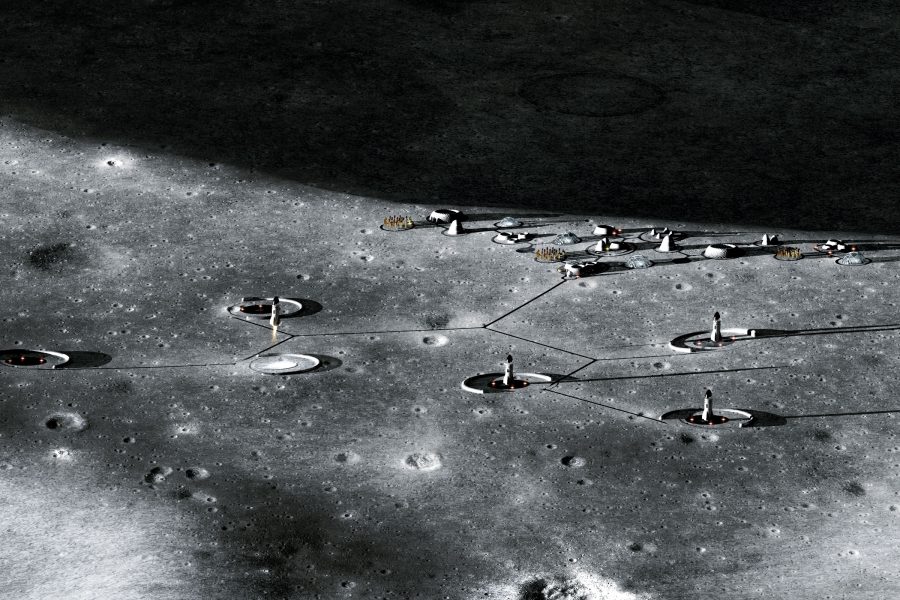
“The difficult problems of building on the Moon have already led to new technologies for building better and faster and cheaper on Earth,” Ingels says. Rendering by BIG
“The way we live and work now may not fit with the way that it was accommodated before,” Ingels says. “Sometimes it’s technology that will change, sometimes it’s social change, cultural change, demographic change, climate change. Every time you can identify how the world has changed, you now have a real reason to try to think about how we could do it differently.”
The difficult problems of building on the Moon have already led to new technologies for building better and faster and cheaper on Earth.
In general Ingels says architecture is in part the art and science of accommodating life, “essentially altering our immediate environment to make it more suitable for human life.”
“Sixty-thousand years ago when we were living in East Africa we didn’t really need architecture because the climate was incredibly friendly to the biological needs of human beings. But as we started migrating away from East Africa and eventually reached Scandinavia, our survival became dependent on our ability to source fur and clothes, and we used fire and architecture to keep the snow and the cold at bay.”
Thinking beyond Earth is exciting in new ways, as it opens up previously unheard of possibilities. “The Moon and Mars don’t have any actual architecture,” Ingels says, adding that this means there are also no established architectural vocabularies. Instead, there’s a whole different set of constraints and a possibility to produce a new architectural vocabulary, he says, one that is rooted in performance and using local materials. “That would nonetheless produce an architectural vocabulary that could be indigenous to the Moon or Mars, and it could be incredibly exciting to help formulate that architectural language,” Ingels says.

